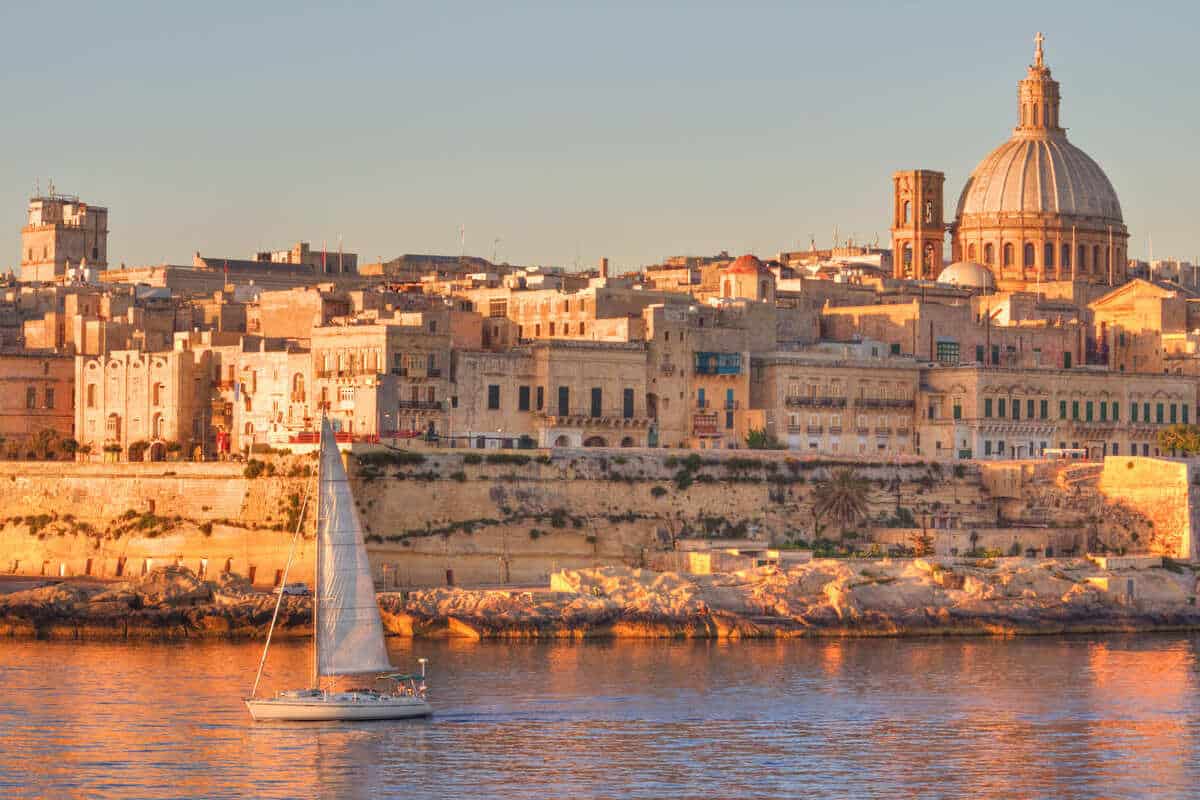An ancient sea surrounded by some of the world’s most ancient and historically-charged nations, the Mediterranean is the leading summer destination globally, drawing in millions of visitors with its promise of dolce vita and crystal-clear waters.
Not all Mediterranean countries are 100% safe for tourists; however, with several Italian islands being overwhelmed by the migrant crisis, petty crime rising across Spain and Southern France, and the Middle East, which controls the sea’s eastern end, being engulfed in conflict.
Where, then, is it low-risk to visit if you’re simply hoping for a stress-free Mediterranean vacay?
You know, strolling down the promenade, biting away at your pistachio gelato, without fear you could reach for your phone in your pocket and suddenly not find it there?
According to the U.S. State Department, these are 4 of the safest Mediterranean countries right now:
Malta

A tiny archipelagic country just south of Sicily, Malta is famous for its incredibly high concentration of historic Baroque churches (one for each day of the year, to be precise), ancient citadels, long miles of sandy beaches, and lively resort cities.
Whether it’s taking a day trip out to the Blue Lagoon, an aqua-colored stretch of sea and one of the most beautiful natural landmarks in Malta, or wandering the cobbled streets of Victoria on the small island of Gozo, your safety concerns should be minimal:
Not to say it is inexistent, but violent crime is exceedingly rare in Malta, and even petty theft is uncommon: again, this is a small, dot-like country that’s barely discernible on a map of the vast, azure Mediterranean, and it’s not like wrongdoers have lots of places to hide.
You definitely shouldn’t leave items unattended on a beach, especially in crowded areas, but there’s not a single crime hotspot across the Maltese islands, which means you can catch a break from being on high alert all the time.
Cyprus

Yet another island on the Mediterranean, Cyprus also features on Washington’s Level 1, despite being a relatively unknown destination for a majority of American travelers: think a Greek island – with significant Turkish influences – except it’s its own country.
From the verdant, mountainous inland, dominated by a shrouded-in-myth Mount ‘Olympus’, to the white-sandy beaches of Protaras and Ayia Napa, where a majority of the luxurious hotels are centered, Cyprus is just the quintessential Mediterranean getaway.
If you’re wondering how safe it is, risks for tourists are lower than in every other hugely popular Southern European spot: we’re talking extremely low levels of gun and knife crime, negligible rates of pickpocketing in resort towns, and regional stability.
Now, there is a decade-long border dispute on the island, whose Northern third is claimed by a breakaway self-proclaimed Turkish Republic, but there is no war currently being waged, in spite of ethnic grievances, and even the North isn’t dangerous to visit (though it’s definitely less developed).
Croatia

Over in the mainland, the so-called ‘Slavic Italy’ is, in fact, a lot safer than actual Italy: Croatia is one of a handful of Southern European countries at Level 1, according to U.S. authorities, and it’s not hard to understand why.
It’s not a common target for radicals or terrorist organizations; unlike major Western countries like France or Spain, inter-communal violence and ethnic tensions are low, as the country’s demographic is very much, well, almost homogenously Croatian, and crime is largely under control.
Croatia went from a war-torn country in the 1990s, in the wake of the last Balkan war, to one of the most stable, cherished democracies of Europe.
It is also a world-class tourist destination, best known for its stone-built medieval Dalmatian towns and turquoise coast.
We would still encourage you to keep an eye on your purse in the absolute gong-show that is Dubrovnik’s main street Stradun, or the historic port of Split, where pickpockets sometimes circulate, but in touristy cities, there’s really no need to ‘keep a low profile’, nor be extra vigilant after dark.
Montenegro

Croatia’s closest neighbor to the South, Montenegro, is an extension of the former in many ways: for starters, they both once belonged to the same country, Yugoslavia.
They speak different dialects of the same language, and they share the same culture.
Similarly to Croatia, Montenegro also has a piece of Dalmatia, with the historic walled citadels and pebbly beaches bounded by crystal-clear waters to go with it, and it could even be argued that the Montenegrin Kotor rivals Dubrovnik in beauty.
Montenegro is also incredible for nature-based activities. After all, it’s in the country’s name literal etymology: Black Mountain.
Picture towering, jagged peaks, deep valleys traversed by scenic, meandering rivers, and, of course, the stunning, rugged Adriatic coastline.
The best thing is when you’re exploring Montenegro, however, off-path it may be, there’s no need to maintain a high level of situational awareness, nor avoid this place or that for whatever reason: it is among the safest, most ‘neutral’ countries in Europe.
Credit: Source link

